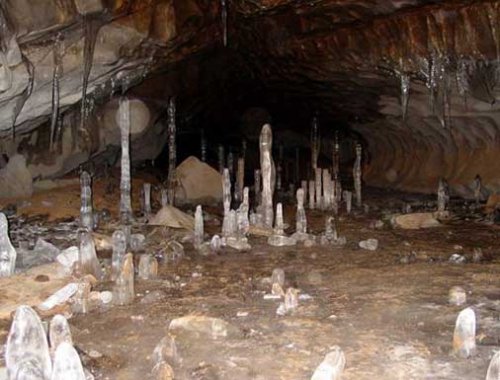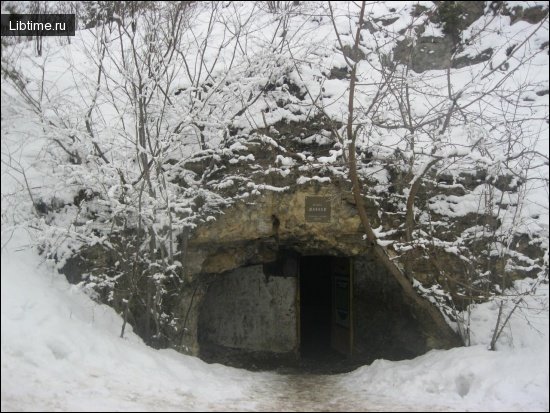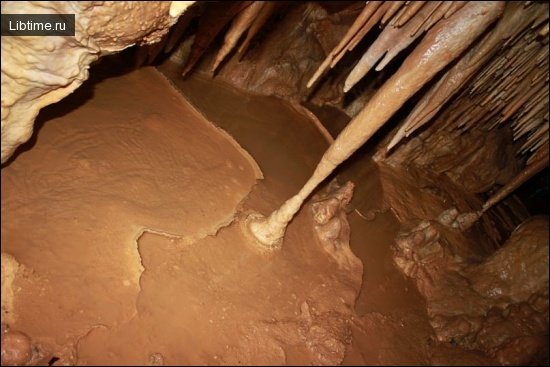Lake Cave
The Lake Cave (Ozernaya Cave), located 1 km southwest of the village of Strilkovtsy (Ternopil region, Ukraine), was formed in Neogene gypsums 20 m thick. It belongs to the East European speleological country. Its entrance is located at the bottom of a large karst sinkhole about 14 m deep.
The cave has a labyrinth structure and is confined to two main systems of tectonic fractures of north-northeast and west-northwest directions. 
Cones of marl crumbling are developed at the base of the organ pipes, and on the surface of the karsted massif they correspond to gentle subsidence. Lakes are widespread in the cave, reaching 15 m in length and 1.5 m in depth.
The water in the lakes is calcium-sulfate with a mineralization of 2292 mg/l. The permanent lakes, located in galleries opening the aquifer, are flowing. Experiments with fluorescein staining of water have established that the speed of groundwater movement reaches 11 m/hour. Water temperature is 7-8° and air temperature is 9°, 8. The humidity is 86-100 %.
Chemogenic deposits are represented by gypsum crystals and calcite stalactites and stalagmites. The latter are up to 0.3 m high. Oolites were found in the Zhemchuzhny grotto. Especially interesting are needle-shaped calcite crystals of round and rhombic cross-sections up to 27 cm long.
The total length of the Ozernaya Cave is 80 100 m, and the volume of its cavities is 515 700 m3.


